Related Research Articles

Sobibor was an extermination camp built and operated by Nazi Germany as part of Operation Reinhard. It was located in the forest near the village of Żłobek Duży in the General Government region of German-occupied Poland.
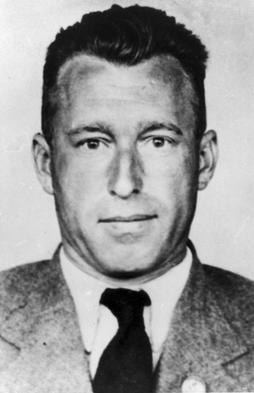
Franz Paul Stangl was an Austrian police officer and commandant of the Nazi extermination camps Sobibor and Treblinka in World War Two.

Gustav Franz Wagner was an Austrian member of the SS with the rank of Staff sergeant (Oberscharführer). Wagner was a deputy commander of Sobibor extermination camp in German-occupied Poland, where 200,000-250,000 Jews were murdered in the camp's gas chambers during Operation Reinhard. Due to his brutality, he was known as "The Beast" and "Wolf".

Escape from Sobibor is a 1987 British television film which aired on ITV and CBS. It is the story of the mass escape from the Nazi extermination camp at Sobibor, the most successful uprising by Jewish prisoners of German extermination camps. The film was directed by Jack Gold and shot in Avala, Yugoslavia. The full 176-minute version shown in the UK on 10 May 1987 was pre-empted by a 143-minute version shown in the United States on 12 April 1987.

Thomas "Toivi" Blatt was a Holocaust survivor, writer of mémoires, and public speaker, who at the age of 16 escaped from the Sobibór extermination camp during the uprising staged by the Jewish prisoners in October 1943. The escape was attempted by about 300 inmates, many of whom were recaptured and killed by the German search squads. Following World War II Blatt lived in Communist Poland until the Polish October. In 1957, he emigrated to Israel, and in 1958 settled in the United States.
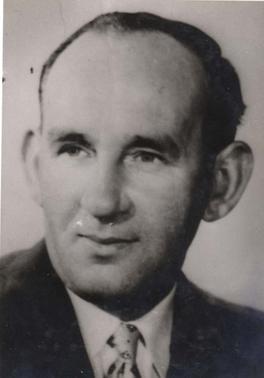
Karl August Wilhelm Frenzel was an SS noncommissioned officer in Sobibor extermination camp.
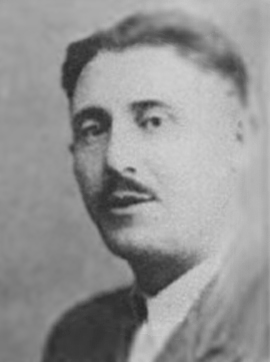
Leon Felhendler was a Polish resistance fighter known for his role in organizing the 1943 prisoner uprising at Sobibor extermination camp together with Alexander Pechersky.
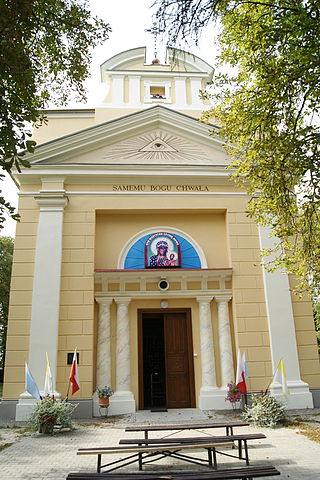
Dorohucza is a village in the administrative district of Gmina Trawniki, within Świdnik County, Lublin Voivodeship, in eastern Poland. It lies approximately 23 kilometres (14 mi) east of Świdnik and 33 km (21 mi) east of the regional capital Lublin.

Gerrit Kleerekoper was a Jewish-Dutch gymnastics coach. He was married with two children and worked as a diamond cutter.

Erich Gustav Willie Lachmann was an SS functionary who participated in Operation Reinhard in Sobibor extermination camp. Lachmann was born on 6 November 1909 in Legnica. His first job was that of a journeyman bricklayer. In spring 1933, he joined the Stahlhelm paramilitary organization and subsequently the SA, despite not being a member of the Nazi Party. In September of that same year, he was conscripted into the auxiliary police force and attended an Unterführer training course in Katowice. Despite failing the course, he was promoted to Oberwachtmeister.

Selma Engel-Wijnberg was one of only two Dutch Jewish Holocaust survivors of the Sobibor extermination camp. She escaped during the 1943 uprising, hid in Poland, and survived the war. Engel-Wijnberg immigrated to the United States from Israel with her family in 1957, settling in Branford, Connecticut. She returned to Europe again only to testify against the war criminals of Sobibor. In 2010 she was in the Netherlands to receive the governmental honour of Knight in the Order of Oranje-Nassau.
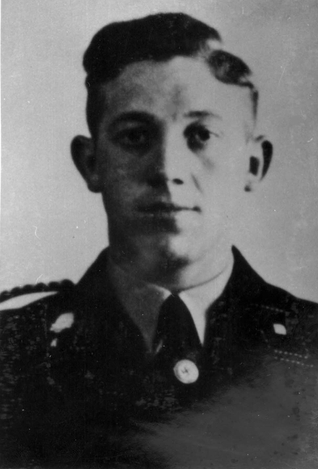
Johann Niemann was a German SS officer and Holocaust perpetrator who was deputy commandant of Sobibor extermination camp during Operation Reinhard. He also served as a Leichenverbrenner at Grafeneck, Brandenburg, and Bernburg during the Aktion T4, the SS "euthanasia" program. Niemann was killed during the Sobibor prisoner uprising in 1943.

Siegfried Graetschus was a German SS functionary at the Sobibor extermination camp during Operation Reinhard, the deadliest phase of the Holocaust in occupied Poland. He was assassinated by a prisoner during the Sobibor uprising.

Jules Schelvis was a Dutch Jewish historian, writer, printer, and Holocaust survivor. Schelvis was the sole survivor among the 3,005 people on the 14th transport from Westerbork to Sobibor extermination camp, having been selected to work at nearby Dorohucza labour camp. He is known for his memoirs and historical research about Sobibor, for which he earned an honorary doctorate from the University of Amsterdam, Officier in the Order of Orange-Nassau, and Order of Merit of the Republic of Poland.

Rudolf Beckmann was a German SS-Oberscharführer in the Sobibor extermination camp. He was stabbed to death during the uprising in Sobibor by inmates. Beckmann was a member of the Nazi Party and the Schutzstaffel. Nothing is known about his early life.
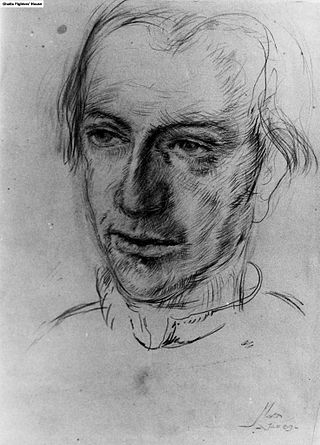
Max van Dam was a Dutch artist born in Winterswijk. He was murdered in the Sobibor extermination camp.

Stanisław "Szlomo" Szmajzner was one of 58 known survivors of the Sobibór extermination camp in German-occupied Poland and participated in the 1943 camp-wide revolt and escape from Sobibór.

The Sobibor perpetrator album contains sixty-two pictures of Sobibor extermination camp during its operation, taken by SS Holocaust perpetrators employed there. It belonged to deputy commander Johann Niemann, who was killed in the Sobibor uprising in 1943. The album was donated to the United States Holocaust Memorial Museum in 2020 and is the first collection of photographs of the camp in operation to be published.
References
- 1 2 3 4 5 Schelvis, Jules (2007). Sobibor: A History of a Nazi Death Camp. Oxford: Berg. p. 231. ISBN 978-1-84520-419-8.
- 1 2 3 4 5 6 7 Cüppers, Martin; Gerhardt, Annett; Graf, Karin; Hänschen, Steffen; Kahrs, Andreas; Lepper, Anne; Ross, Florian (2020). Fotos aus Sobibor (in German). Metropol Verlag. p. 341. ISBN 978-3-86331-506-1.
- ↑ "Biuletyn Informacji Publicznej".
- 1 2 3 4 Schelvis, Jules (2007). Sobibor: A History of a Nazi Death Camp. Oxford: Berg. p. 232. ISBN 978-1-84520-419-8.
- 1 2 3 4 5 6 7 8 9 10 11 12 13 14 15 16 17 18 19 Sobibor Interviews: Survivors of the revolt
- 1 2 3 4 Cüppers, Martin; Gerhardt, Annett; Graf, Karin; Hänschen, Steffen; Kahrs, Andreas; Lepper, Anne; Ross, Florian (2020). Fotos aus Sobibor (in German). Metropol Verlag. p. 342. ISBN 978-3-86331-506-1.
- ↑ "Biuletyn Informacji Publicznej".
- ↑ Schelvis, Jules (2007). Sobibor: A History of a Nazi Death Camp. Oxford: Berg. pp. 232–233. ISBN 978-1-84520-419-8.
- 1 2 3 4 Schelvis, Jules (2007). Sobibor: A History of a Nazi Death Camp. Oxford: Berg. p. 233. ISBN 978-1-84520-419-8.
- 1 2 3 4 Schelvis, Jules (2007). Sobibor: A History of a Nazi Death Camp. Oxford: Berg. p. 234. ISBN 978-1-84520-419-8.
- ↑ Cüppers, Martin; Gerhardt, Annett; Graf, Karin; Hänschen, Steffen; Kahrs, Andreas; Lepper, Anne; Ross, Florian (2020). Fotos aus Sobibor (in German). Metropol Verlag. p. 343. ISBN 978-3-86331-506-1.
- ↑ Catharina Gokkes in Digital Monument to the Jewish Community in the Netherlands
- ↑ Schelvis, Jules (2007). Sobibor: A History of a Nazi Death Camp. Oxford: Berg. pp. 172, 182, 188. ISBN 978-1-84520-419-8.
- ↑ Miriam Novitch, Sobibor: Martyrdom and Revolt (Paperback 1980), pages 86, 88
- ↑ Loe de Jong, The Kingdom of the Netherlands During World War II , Part 8b, page 883
- ↑ Bem, Marek (2015). Sobibor Extermination Camp: 1942-1943 (PDF). Stichting Sobibor. pp. 298, 383, 413, 421, 438. ISBN 978-83-937927-2-6.
- ↑ Webb, Chris (2017). Sobibor Death Camp: History, Biographies, Remembrance. Columbia University Press. p. 163. ISBN 978-3-8382-6966-5.
- ↑ Rashke, Richard (2013). Escape from Sobibor. Delphinium Books. p. 522. ISBN 978-1-4804-5851-2.
- ↑ jewishgen.org Moshe Hochman, Eyewitness Testimony of Moshe Hochman
- ↑ Schelvis, Jules (2007). Sobibor: A History of a Nazi Death Camp. Oxford: Berg. pp. 234–235. ISBN 978-1-84520-419-8.
- 1 2 3 4 Schelvis, Jules (2007). Sobibor: A History of a Nazi Death Camp. Oxford: Berg. p. 235. ISBN 978-1-84520-419-8.
- ↑ Bem, Marek (2015). Sobibor Extermination Camp: 1942-1943 (PDF). Stichting Sobibor. p. 331. ISBN 978-83-937927-2-6.
- ↑ From Chelm to Sobibor . . . statement by Chaim Powroznik, in Chelm on January 10, 1944, referenced by USHMM
- ↑ NIOD Toegang 804, Inventaris 18
- ↑ Bem, Marek (2015). Sobibor Extermination Camp: 1942-1943 (PDF). Stichting Sobibor. pp. 70, 298. ISBN 978-83-937927-2-6.
- 1 2 3 4 Schelvis, Jules (2007). Sobibor: A History of a Nazi Death Camp. Oxford: Berg. p. 236. ISBN 978-1-84520-419-8.
- ↑ Cüppers, Martin; Gerhardt, Annett; Graf, Karin; Hänschen, Steffen; Kahrs, Andreas; Lepper, Anne; Ross, Florian (2020). Fotos aus Sobibor (in German). Metropol Verlag. p. 344. ISBN 978-3-86331-506-1.
- ↑ Cüppers, Martin; Gerhardt, Annett; Graf, Karin; Hänschen, Steffen; Kahrs, Andreas; Lepper, Anne; Ross, Florian (2020). Fotos aus Sobibor (in German). Metropol Verlag. p. 345. ISBN 978-3-86331-506-1.
- 1 2 3 4 Schelvis, Jules (2007). Sobibor: A History of a Nazi Death Camp. Oxford: Berg. p. 237. ISBN 978-1-84520-419-8.
- ↑ Gertrud Poppert, née Schönborn in the German Federal Archives Memorial Book
- ↑ Toivi Blatt interviews Sasha Pechersky about "Luka" in 1980; retrieved on 8 May 2009.
- ↑ Naedele, Walther F. (April 15, 2015). "Esther Raab, 92, Holocaust survivor". Philly.com. Retrieved April 15, 2015.
- ↑ Last survivor of Sobibor death camp dies aged 96; retrieved on 3 June 2019.
- 1 2 Arad, Yitzhak. Belzec, Sobibor, Treblinka: The Operation Reinhard Death Camps. Indiana University Press. 1987.
- ↑ Arthur Solomonov (2008-09-01). "Aleksej Waizen: I knew it every second that I could be killed (Алексей Вайцен: Каждую секунду я знал, что меня могут убить)". The New Times (Russia).
- ↑ BBC History of World War II. Auschwitz; Inside the Nazi State. Part 4, Corruption.
- ↑ "Arkady Wajspapir, key figure in Sobibor Uprising, dies at 96". JTA. January 12, 2018. Retrieved December 8, 2018.
- ↑ Schelvis, Jules (2007). Sobibor: A History of a Nazi Death Camp. Oxford: Berg. p. 242. ISBN 978-1-84520-419-8.
- ↑ Bem, Marek (2015). Sobibor Extermination Camp: 1942-1943 (PDF). Stichting Sobibor. pp. 66, 298. ISBN 978-83-937927-2-6.
- 1 2 3 4 5 Jules Schelvis, Vernietigingskamp Sobibor (5th Ed. 2004), pages 76, 237, 257, 260, 342
- 1 2 NIOD Toegang 804, Inventaris 54
- ↑ Vienna to Sobibor train, June 14, 1942
- 1 2 Afwikkelingsbureau Concentratiekampen Sobibor (1946)
- ↑ Sobibor Interviews: Dutch Survivors.
- ↑ Memorial Center Camp Westerbork
- ↑ Henderiene den Arend-van der Reis in Digital Monument to the Jewish Community in the Netherlands
- ↑ Auguste Berliner in Digital Monument to the Jewish Community in the Netherlands
- ↑ Flora Blok in Digital Monument to the Jewish Community in the Netherlands
- ↑ Hilde Beate Blumendal in Digital Monument to the Jewish Community in the Netherlands
- ↑ Marga Cohen in Digital Monument to the Jewish Community in the Netherlands
- ↑ Sophia Cohen in Digital Monument to the Jewish Community in the Netherlands
- ↑ Hester Fresco in Digital Monument to the Jewish Community in the Netherlands
- ↑ Klaartje Gompertz in Digital Monument to the Jewish Community in the Netherlands
- ↑ Fanny Landesmann in Digital Monument to the Jewish Community in the Netherlands
- ↑ Naatje Roodveldt-Moffie in Digital Monument to the Jewish Community in the Netherlands
- ↑ Lotje Stad in Digital Monument to the Jewish Community in the Netherlands
- ↑ Judith Swaab in Digital Monument to the Jewish Community in the Netherlands
- ↑ Annie Troostwijk-Hijmans in Digital Monument to the Jewish Community in the Netherlands
- ↑ Lena Verduin in Digital Monument to the Jewish Community in the Netherlands
- ↑ Charlotte Zeehandelaar-Andriesse in Digital Monument to the Jewish Community in the Netherlands
- ↑ History Sobibor, Dutch Sobibor Foundation.
- ↑ Elia Aron Cohen, De Negentien Treinen naar Sobibor
- ↑ Thomas Blatt, The Forgotten Revolt
- ↑ Jules Schelvis, De Transportlijsten
- ↑ Jules Schelvis, Binnen de Poorten
- ↑ Mirjam Blits, Auschwitz 13917
- ↑ Dutch Red Cross Sobibor (1947) (PDF)
- ↑ Onderzoek - Vernietigingskamp Sobibor NIOD Toegang 804